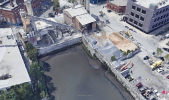- Joined
- Jan 7, 2018
- Messages
- 486
- Reaction score
- 540
- Age
- 71
- Location
- Long Island, NY
- Website
- www.zazzle.com
I'll be flying at a small concrete materials site next week in a congested urban area. Every inch of the site is concrete, which I am sure is rebar reinforced to handle their heavy equipment traffic (dump trucks, cement mixers, etc.). I'm considering bringing a short 2 ft wooden step ladder to launch the drone from, but I am unsure as to how far above the rebar the drone needs to be in order for the compass to not be affected by it. Any opinions or experience with this?







